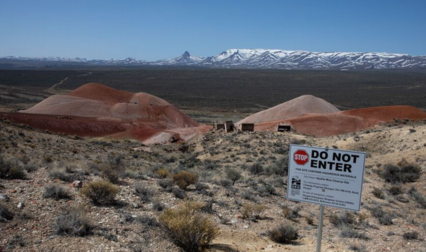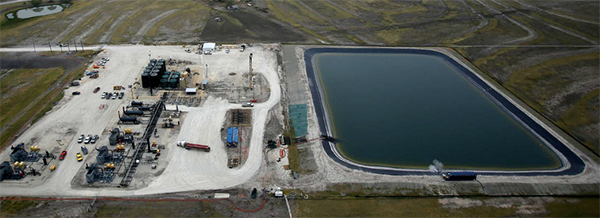Dear Reader,
If you’re involved in the lithium industry on any level, the biggest news to come around in a long time is the McDermitt Caldera.
Straddling the border between Oregon and Nevada, this massive geological complex is believed to be one of the oldest craters formed by the Yellowstone Supervolcano.
Inactive for many millions of years and now tectonically removed from the Yellowstone Supervolcano’s active areas due to the movement of the Earth’s crust, the McDermitt Caldera spent an eon or two as a lake and then dried up.

Its story would have come to a quiet ending if not for a recent discovery made there by mining exploration teams.
A geological analysis published by Science just two weeks ago hypothesizes that the McDermitt Caldera is home to between 20 million and 40 million tons of lithium bicarbonate — perhaps the most sought-after resource there is today thanks to the ballooning rechargeable battery market.
If those estimates are correct, the McDermitt Caldera’s mineral wealth would constitute between 22% and 45% of the world’s known lithium resources — bigger than any other single deposit.
In a world where lithium demand is already starting to outstrip supply, with no respite anywhere in sight, something like this should feel like a godsend for a wide spectrum of industries and dozens of classes of consumer products, not to mention massive civic, institutional, and military needs. Join Wealth Daily today for FREE. We’ll keep you on top of all the hottest investment ideas before they hit Wall Street. Become a member today, and get our latest free report: “How to Make Your Fortune in Stocks”The Best Free Investment You’ll Ever Make
It contains full details on why dividends are an amazing tool for growing your wealth.
The McDermitt Caldera May Already Be Too Late
The problem, however, is that while lithium demand is going to continue to explode every day of every month for the foreseeable future, it’s going to be at least a decade before we get even a pound of usable lithium out of the McDermitt Caldera.
Here’s why: Exploration, while perhaps the single biggest challenge in the lithium production equation simply by virtue of its open-ended timeline, is only the first step.
After that comes drill-testing, then comes massive infrastructural investment and allocation, and then, and only then, comes mining.
And once the mining is done, it’s still about another 24 months before refined material can be shipped from the production site.
All told, this is a 10-year process beginning to end — not including the actual exploration, of course.
You can see the problem.
In 10 years' time, the entire landscape of the lithium market is going to be completely transformed.
It will be unrecognizable to today's eyes, and the potential for a full-scale, worldwide deficit and subsequent panic is very real.
So while the McDermitt Caldera might be a major windfall for modern industry, the time it will take to exploit it makes the whole thing almost irrelevant to our immediate situation.
To cure the problem that we’re going to walk into in the next couple years, a different kind of solution is necessary.
Learn to Think Outside the Caldera
Now, let me tell you about another lithium-bearing property in North America.
On a 671-square-mile patch of northwestern Alberta, a small, privately owned oil and gas company has been pumping its product for the last 40 years.
For those four decades, this company has been using and reusing brine that it stores in hundreds of rectangular ponds across the property.
In all, there are 99 billion barrels of this brine, and dissolved within it is 4.3 million tons of lithium bicarbonate.

The lithium isn’t hidden beneath layers of rock strata. It’s not isolated in narrow veins running deep into the earth… It’s all right there, right in the solution. The concentrations are well known and documented.
Now, granted, 4.3 million tons doesn’t sound like much compared with the 20–40 million tons locked away in the McDermitt Caldera, but the point here isn’t just quantity. It’s accessibility.
You see, this lithium resource needs no assaying, no mining. It does not require billions of dollars' worth of heavy equipment to harvest.
A small tech company recently signed an agreement with the oil and gas firm working this land to simply hook its filtration facility into the brine flow.
It’s a process nobody’s been able to get right before this moment, and it’s already been proven to work with an efficiency of 97% or better.
It's Like the Difference Between Buying Bottled Water and Screwing a Filter Onto Your Tap
It pumps the brine through, filters out the lithium, returns the brine, and work continues uninterrupted.

From beginning to end, salable lithium can be produced in as little as two months.
The company that’s doing this was started by veterans of the petrochemical industry, specifically for the purpose of tapping into lithium-bearing oil field brines, and they predict that this time next year, the company will be in commercial production.
Within a couple years, they believe a 20,000-ton-per-year production rate is fully conceivable.
Things are moving so fast, in fact, that despite only having a pilot plant currently in place, the company is already receiving serious inquiries from some of the world’s biggest lithium end users.
I’m talking about electric vehicle manufacturers who’ve been scrambling to find friendly North American suppliers for their battery production lines.
As of this morning, this company had a market valuation of right around $25 million.
With a cost of production set around $4,000 ton and a target annual production rate of 20,000 tons, the company could be in reach of $1.4 billion in annual profits in just a few short years.
To Those Who Keep Asking… This Is How You Get 100x Growth
$25 million current market capitalization… $1.4 billion annual profits already charted out. Are you starting to see the opportunity here?
This company, if it’s not bought out by a major producer — which is actually the likeliest scenario — could have a multibillion-dollar valuation by the middle of the decade.
Today, the stock trades on two North American exchanges, and, as you’ve probably surmised by now, things are still pretty quiet.
But the fact is it’s this, and not the McDermitt Caldera, that should be the biggest lithium story in today’s headlines.
Sure, those 40 million tons will save us eventually, but without a bridge, the world may well go into a depression long before that ever happens.
When I first heard about this company several months ago, I went to work researching the ins and outs of the process, the property, and the business model.
Today, you can get a firsthand look at that research right here.
Fortune favors the bold, Alex Koyfman His flagship service, Microcap Insider, provides market-beating insights into some of the fastest moving, highest profit-potential companies available for public trading on the U.S. and Canadian exchanges. With more than 5 years of track record to back it up, Microcap Insider is the choice for the growth-minded investor. Alex contributes his thoughts and insights regularly to Energy and Capital. To learn more about Alex, click here.


